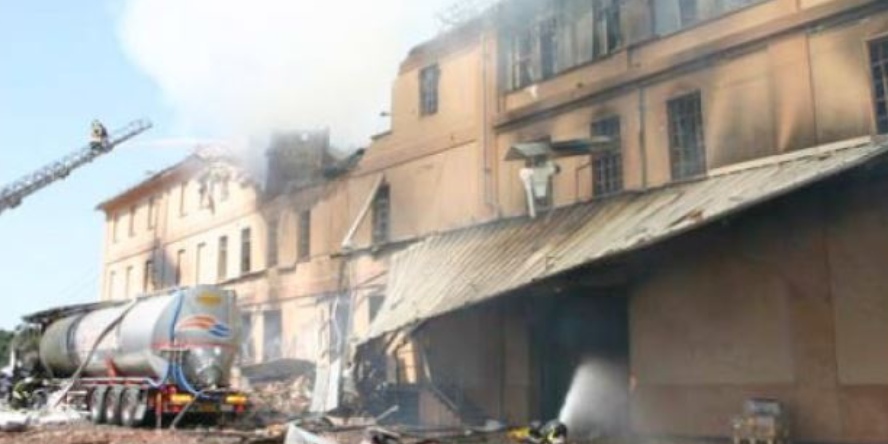How did a massive explosion happen in an Italian flour factory, where five people died, and the building was destroyed? Below we present a reconstruction of the events that led to this tragedy.
The factory operated in an old, four-storey building. The explosion occurred just after a tanker was loaded with flour to be delivered to customers. As the tanker was slightly over filled, part of the product was sent back to one of the silos via a pneumatic transport system. It was at the time of this operation that a powerful explosion occurred.
The causes of the flour explosion, and the dynamics of its development, could be determined based on the analysis of the collected evidence, testimonies of witnesses, and examination of the resulting remains. The primary cause of the explosion was an electrostatic discharge that occurred inside the pipeline. The spark has been formed on the connection of a rubber hose with a steel pipe. Such a course of events is evidenced by the traces of deformations created due to overpressure inside the pipeline. This is also confirmed by the calculations of the pressure increase inside the pipeline, according to EN 14491 standard.
The explosion moved into the flour silo and then through the bucket elevator to the whole building, which led to many secondary explosions.
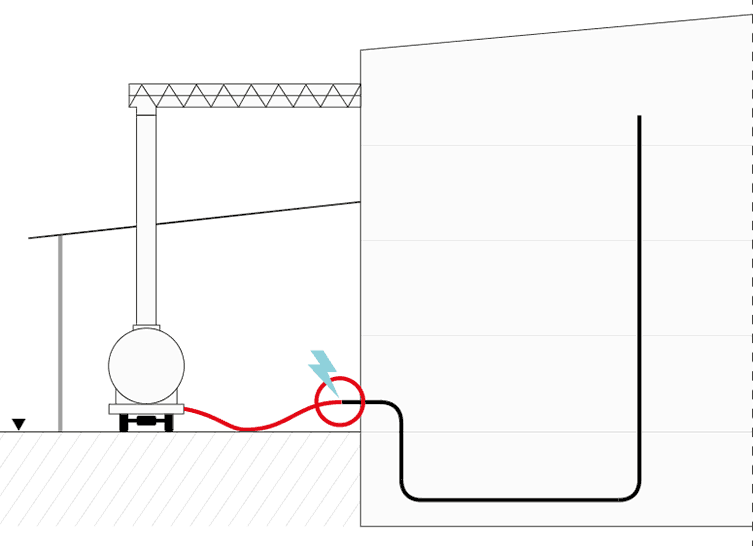
Fig. 1: First explosion site
Plant description
The Cordero mill, where a tragic flour explosion occurred in 2007, was located in a brick building consisting of four storeys and a basement. The product warehouse and offices were located in a more modern, three-storey building.
The main building constituting the basic production area consisted of four sections separated by thick brick walls. The building also had an elevator and an internal staircase. The production part was located in room “B”, while room “A” was used as a warehouse for finished flour and for preparing wheat for milling. The layout of the rooms described is shown in Figures 1 and 2, which show the ground and top floors of the main building.
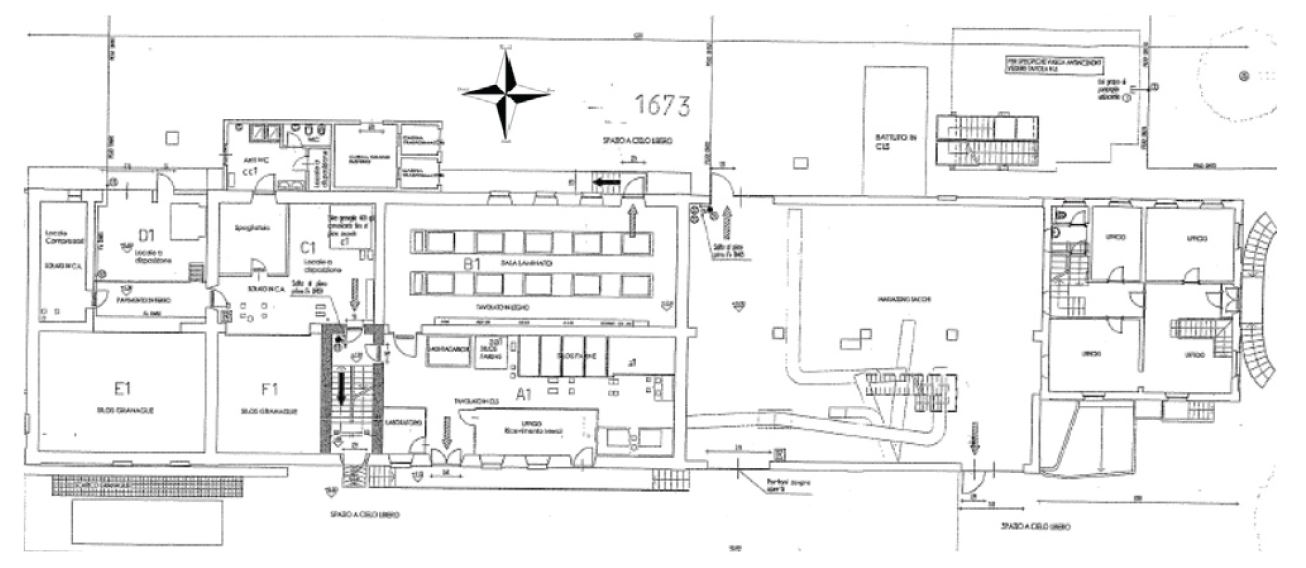
Fig. 2: Ground floor plan

Fig. 3: Top floor plan
Production process
The wheat was taken from the tanks located next to the main building and then transported by a bucket conveyor for preliminary cleaning.
It was then transported to intermediate tanks, from where the wheat was again transported through a system of auger conveyors to metal tanks on the second floor, where it was weighed and then transported to a milling and separation system in area B1. The grain was passed through the mill and screen several times until flour was obtained. The finished product was transported by bucket elevators and auger conveyors to warehouses located in area A. From there, the flour was transported again via bucket elevators and auger conveyors, finally reaching the tanker by gravity. For the unloading of tankers, on the other hand, a pneumatic transport system was used, which consisted of a compressor built on the tanker and a rubber hose connected to a steel pipeline located in space A1. The mentioned pipeline went through all storeys, from the basement located in space A0 to the flour warehouse located on the fourth floor (A4). It consisted of several legs and distribution valves, which allowed the flour to be distributed to different warehouses.
Investigation and evidence collection
Due to the fact that in the flour explosion, as many as five people were killed, the prosecutor’s office conducted an investigation, and then a trial was held. Although both the prosecutor and the defence immediately after the accident asked for a technical expert’s appointment, he was officially asked to carry out an expert opinion only one year after the tragedy. It was a big impediment because time has taken its toll. The delicate nature of the evidence has made it no longer representative. Therefore, the experts had to use the material from the first technical investigation, which was mainly photographs. However, several tests were carried out on the site. The following activities have been performed:
- site investigation,
- interviews with witnesses,
- documentation analysis.
As it turned out, the only representative evidence that could be considered relevant to the investigation was the remains of pipes and machinery, as well as earlier technical reports and photographs. The building and the surrounding area had undergone significant changes for security reasons at that time, so that much of the evidence was no longer available.
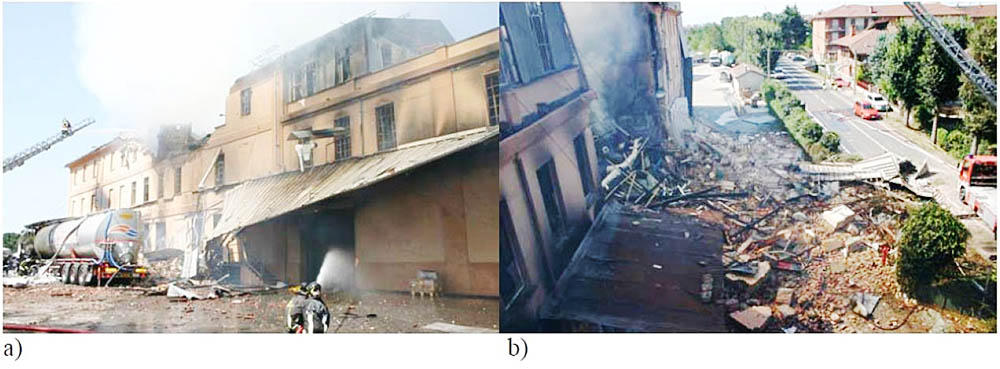
Photo. 1: Damage to the main building. a) south side b) north side
Flour explosion — the scale of destruction
The explosion caused significant damage to the main mill building. The places marked on the plan with the letters A and B have collapsed completely on all storeys. The remaining areas of the building have been slightly or negligibly damaged.
The storeys marked with the letter B collapsed into the basement, crushing all the equipment: sowers, mills, cyclones, augers, or bucket elevators. However, they were not affected by the fire, as most of them still had the original paint.
The northern wall of the building also collapsed. The interior walls, on the other hand, were damaged but not demolished. The same happened to the internal staircase, which, although it remained in place, constituted a collapse risk.
Just as the basement in area B0 collapsed, so in rooms A0 the pressure developed as a result of the explosion and damaged the ceiling but did not make it collapse. Traces on the equipment and walls in the basement area A0 showed the scale of the fire, which covered the whole space and lasted a very long time. However, there was no damage to the devices caused by overpressure, which may indicate that the explosion did not penetrate their interior or was so weak that it could not damage their structure.
The pressure caused by the explosion destroyed the ground floor of area A1 together with the entire bucket elevator. It was the pressure passing to the upper floors through this elevator that caused serious damage to the whole southern side of the building. The walls and ceilings on the middle floors, as well as the upper part of the elevator, were completely destroyed.
The most interesting evidence from the point of view of searching for the explosion source appeared during the analysis of the condition of the pipe used to unload flour from trucks. A part of this system was still in its original location, while the remaining elements were recovered from the rubble. As it turned out, the connection flanges had typical deformations due to the very high pressure inside the pipeline, which led to stresses far exceeding the elastic limit of metal pipes and flanges.

Photo. 2: Tanker after the explosion
Hierarchy and dynamics of events
The primary explosion caused a complex sequence of secondary flour explosions. The tragedy began with a fairly typical task of filling a tanker to transport flour to a customer. This operation was carried out using bucket elevators and auger conveyors, followed by the gravitational fall of the flour into a tanker. However, it turned out that the truck was overfilled, and some flour had to be sent back to the silo. This was done by a pneumatic transport system to which a tanker was connected through a rubber hose. So, we were dealing with two conductive elements, which were separated from each other by an insulator in the form of a six-meter long rubber hose. Very importantly, the tanker, unlike the steel pipes of the pneumatic system, was not earthed. Thus, a system of elements with different electrostatic potentials was created.
The whole operation of the return transfer of flour from the tanker to the warehouses was carried out with low flour flow, evidenced by the degree of valve opening. Thus, the flour concentration in the channel could be in the range of the lower and upper explosion limit.
Pneumatic transport always generates electrostatic charges that can be released as sparks. This is why it is so important to earth the system; the earthing, in this case, was only partial. As a result of the friction of the transported flour on the surface of the rubber hose, an accumulation of electrostatic charge occurred, which created a spark at the point of connection with the metal pipe. It caused the first explosion that took place just inside the pipeline. The pressure and flame began to spread quickly along the channel, rapidly increasing in strength. As a result, the flanges connecting the steel sections of the pipeline (Photo 3) were deformed and the pressure and flame penetrated into the rooms of area A on three storeys. As a result, a series of secondary explosions took place.
The flame’s front reached the wooden silo where the flour from the tanker was being transported by the pipeline. The flour falling to the bottom generated large amounts of suspended dust, which was the fuel of a powerful secondary explosion. The fire thus destroyed the remaining wooden silos. But the damages did not end up there.
The second flour explosion, and the associated rapid increase in pressure in the upper part of the building, caused the collapse of these rooms together with the roof, and the spread of remains over a great distance. It was found that the explosion in this part of the building was transmitted from room A through the door to room B and to the warehousing area.
What is important is that the explosion from the upper part of the building reached the basement through the bucket elevator, where it caused the already mentioned damage in areas A and B.
The flames carried with the pressure wave caused a widespread fire. Most of the elements there were burned, including structures, equipment, and even flour, which was stored in the sack warehouse.
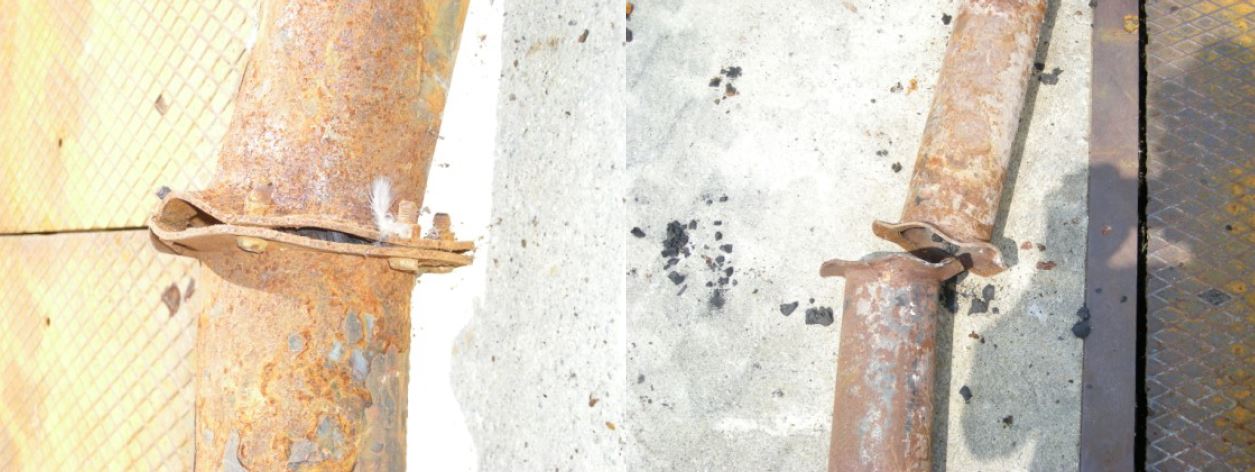
Photo. 3: Flanges of the flour discharge pipe
Conclusions and lessons learned from the event
The destruction of the Cordero plant, which produced flour, began with an explosion in a pipeline transporting flour from a tanker to the silos. The whole process was not properly earthed, so an electric charge accumulated on the rubber hose’s surface, which was released in the form of a spark, led to the first of a series of explosions. This discharge took place between the rubber hose and an earthed metal pipe.
The equipment operating on the site was not equipped with systems for decoupling and suppressing an explosion (although these were listed in the risk assessment document), so the pressure wave and flame propagated very rapidly through the site, causing secondary explosions, widespread fire and the collapse of a large part of the building.
Special attention should be paid to the tanker and the bucket elevator, through which the explosion propagated to the next storeys of the building — in the first case, there was no earthing system and a flexible hose capable of discharging electrostatic charges. In turn, the second one lacked the mentioned explosion protection. The application of these solutions would certainly be insufficient in view of the ATEX Directive requirements, but it could significantly reduce the scale of the tragedy or completely protect against it.
As a result of this event, five people died, and a significant part of the building and equipment was destroyed.
Photos: www.aidic.it/cet
